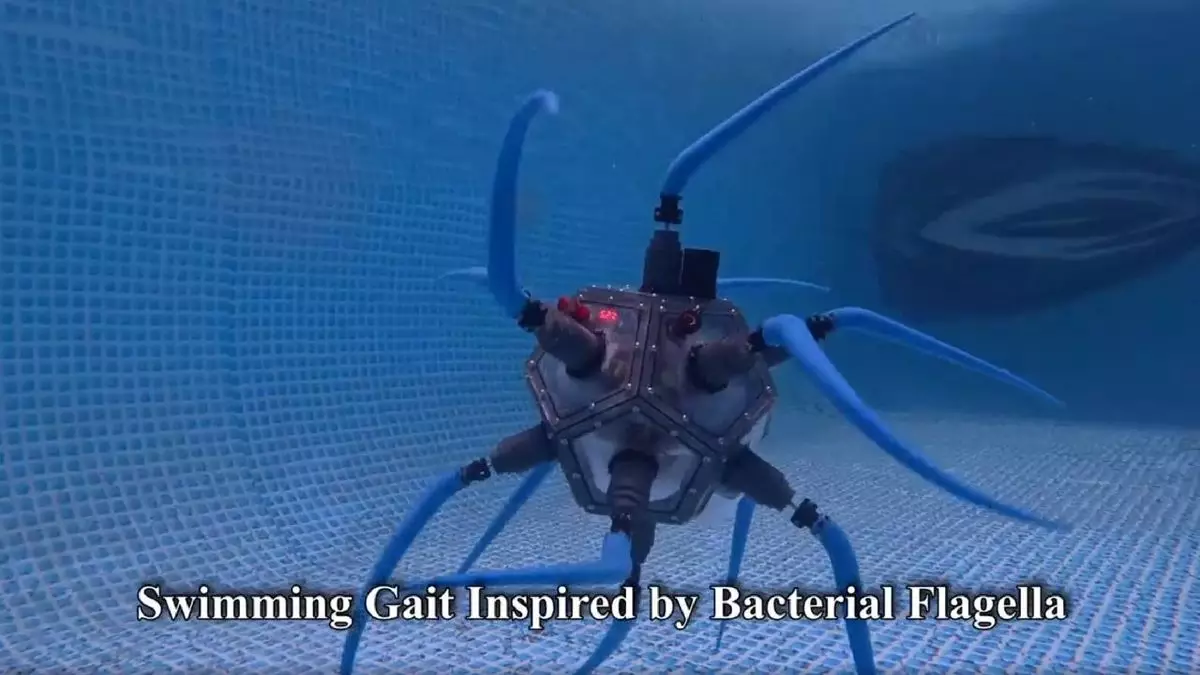Not everyone takes to water effortlessly; some find their aquatic endeavors fraught with awkwardness and struggle. This stark reality paints a vivid image in the mind of anyone who, like me, has grappled with the limitations of their swimming abilities. While my peers glided gracefully across the pool, I floundered, arms thrashing and legs sinking. However, innovative minds have surged ahead with groundbreaking creations that lead us to reconsider what swimming means in the age of technology. Enter the ZodiAq, a remarkable invention that showcases the future of robotic exploration in our oceans.
The ZodiAq isn’t merely another robotic marvel; it’s a soft-bodied underwater drone that mimics nature in incredible ways. Unlike conventional underwater vehicles that rely on rigid structures and bulky designs, the ZodiAq boasts 12 soft, flagella-like appendages. This design replicates the flexible movements of marine creatures, allowing it to maneuver gracefully through water and disturb the environment minimally. This innovation is crucial, as disruptive impacts could threaten delicate marine ecosystems often explored in research.
Engineering Marvel: How the ZodiAq Operates
At the heart of the ZodiAq’s functionality lies a sophisticated system that balances agility and control. A unique ballast system manages the drone’s buoyancy, ensuring it maintains the right depth in the ocean. Each of the 12 limbs is equipped with its own motor, orchestrated by an onboard Raspberry Pi that serves as the robotic brain. This setup enables a nuanced control system that governs both speed and direction—essential for navigating intricate underwater environments.
Moreover, the ZodiAq isn’t just a passive observer of the underwater world. It’s fitted with a suite of sensors that monitor temperature and humidity, which can serve as indicators of potential internal damage. An onboard camera further enriches the drone’s exploratory capabilities, allowing it to capture footage of its surroundings. The Inertial Measurement Unit enhances its navigational accuracy, ensuring that it avoids obstacles while gracefully bobbing through the water like an aquatic ballerina.
What sets the ZodiAq apart from its robotic counterparts is its groundbreaking approach to movement. Unlike most swimming robots, which may struggle with propulsion and stability, the ZodiAq can adapt its limb movements. It doesn’t rely on propulsion from all limbs moving in unison; instead, it utilizes a unique multi-limb strategy to create a more sophisticated form of locomotion. This allows for a continuous movement despite potential failures in individual components, reflecting the adaptive navigation skills found in nature’s own designs.
Nature’s Influence: Understanding Biomimicry
The allure of biomimicry—the practice of designing systems inspired by nature—is a driving force behind the ZodiAq’s creation. Researchers and engineers are increasingly looking to the animal kingdom for insights that can lead to innovations in robotics. The astonishingly adaptive capabilities exhibited by marine organisms inspire not only the design aspects of robotics but also their functional abilities. The ZodiAq encapsulates this philosophy, revealing that observing and understanding nature’s evolutionary successes can yield designs that optimize performance in challenging environments.
Critics might suggest that some technology veers into the eerie, perhaps resembling aspects of science fiction horror. Yet, the line blurs—artificial intelligence and robotics are poised to revolutionize the ways we interact with and study nature. As we venture deeper into the oceans, the soft-bodied ZodiAq exemplifies a future where technology and ecology intersect seamlessly. It is a reminder that while we may feel threatened by uncanny technologies, they also present an opportunity to better understand and coexist with the environments we’ve long taken for granted.
Exploring the Depths of Potential
As impressive as the ZodiAq may be, its creation also raises larger questions about the future of underwater robotics and their applications. How will advancements like these reshape the way we conduct marine research, conservation efforts, or even commercial enterprises? The potential for drones like the ZodiAq to map coral reefs, track marine life, or even monitor climate change influence on oceanic environments is immense.
However, despite its prolific capabilities, the ZodiAq moves at a relatively slow pace—two body lengths every 15 seconds—allowing researchers to maintain a cautious approach in the delicate ecosystems it explores. This recreational pace may seem counterintuitive for a drone, yet it allows for detailed data collection and minimizes disturbance to the environment. The efficacy of such machines lies not just in their physical speed but in the sustainability of their operational methods.
As the exploration of marine environments continues to evolve through innovations like the ZodiAq, it becomes increasingly clear: these creations are not just technological curiosities. They are essential tools that can enhance our understanding of the underwater world, all while embodying a design philosophy rooted in nature’s wisdom.

